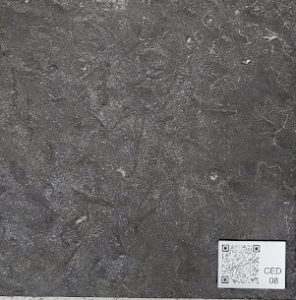<NOTE: CONTENTS ARE BETA VERSION – SUBJECT TO FACT CHECK AND VERIFICATION>

Caithness Flagstone was quarried from more than seven hundred sites in Caithness. The stone consisted originally of mud and fine sand that was deposited in layers on the floor of a lake filling a large inland basin (the Orcadian Basin) during the middle part of the Devonian Period (c. 390 million years ago), when Scotland was south of the Equator at roughly the same latitude as northern Angola is today. Caithness Flagstone, which is mainly mudstone or siltstone, breaks preferentially along parallel bedding planes, forming tabular blocks (‘flags’) that are hard and durable. The stone was used locally to form masonry, paving, roofing and fencing, and was used regionally, nationally and internationally to form paving. Today, Caithness Flagstone is extracted for building stone at three quarries
| Reference | CED08 |
| NAME | Caithness |
| TYPE | Mudstone |
| GEOLOGY | Achscrabster Flagstone Member – Devonian 393.3 and 382.7 million years ago |
| COUNTY | Scottish Highland |
| COLOUR | Dark Grey |
| TEXTURE | Very fine grained with hard, dense appearance |
| BLOCK SIZE LXBXH (mm) | Up to 2.5m x 1.5m x 0.4m |
| SUITABILITY | Paving, flooring, cills, cladding and copings |
| USES (1) | Glasgow Fort link |
| USES (2) | Ruskin Square Croydon Link |
| USES (3) | Tweezer alley seating London Link |
| USES (4) | Jaarbeursplein, Utrecht |
| Stone Names | Caithness |
Credit: Simon Copsey <simoncopsey@cedstone.co.uk>
Disclaimer: Any external linked sites are not University owned and may no longer work. You access these external links at your own risk.
References:
Further reading
Caithness Flagstone — Building Stone Database Scotland (bgs.ac.uk)
Leary, E. (1986), The Building Sandstones of the British Isles
McMillan, A.A., Gillanders, R. J. & Fairhurst, J. A. (1999) Building Stones of Edinburgh Publisher: Edinburgh Geological Society